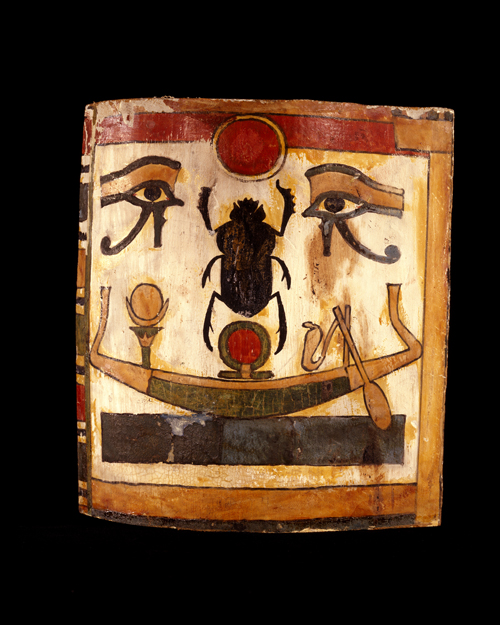
© 2006 Musée du Louvre / Georges Poncet
3rd intermediate period, 22nd dynasty,
945-715 BC
Glued, plastered, and painted fabric
H.: 20 cm; W.: 22 cm; D.: 5 cm
Department of Egyptian Antiquities, Musée du Louvre
(N 3360)
The scarab was an extremely important solar symbol in the Egyptian religion. Egyptians observed the unusual habits of this insect, which would push a ball of dung until it could be buried and later serve as food. That probably led to the image of the sun being pushed tirelessly across the sky by a scarab. Furthermore, scarab larvae laid in similar balls of dung sprang forth when the moment came, which led to the idea of spontaneous generation, hence regeneration and perpetually renewed life. The word kheper, the radical of the name of the god Khepri, also means “coming into existence.” In the myths of Heliopolis, Khepri was the rising sun, the morning sun, and he is represented as a man with a scarab head. The sun travels on two different barques, or boats, one in the morning (called Mandjet) and another in the evening (Mesketet). He is therefore often depicted crossing the sky on one of his barques, or else as an anthropomorphic deity with a ram’s head, or else—as here—as a scarab pushing a solar disk.